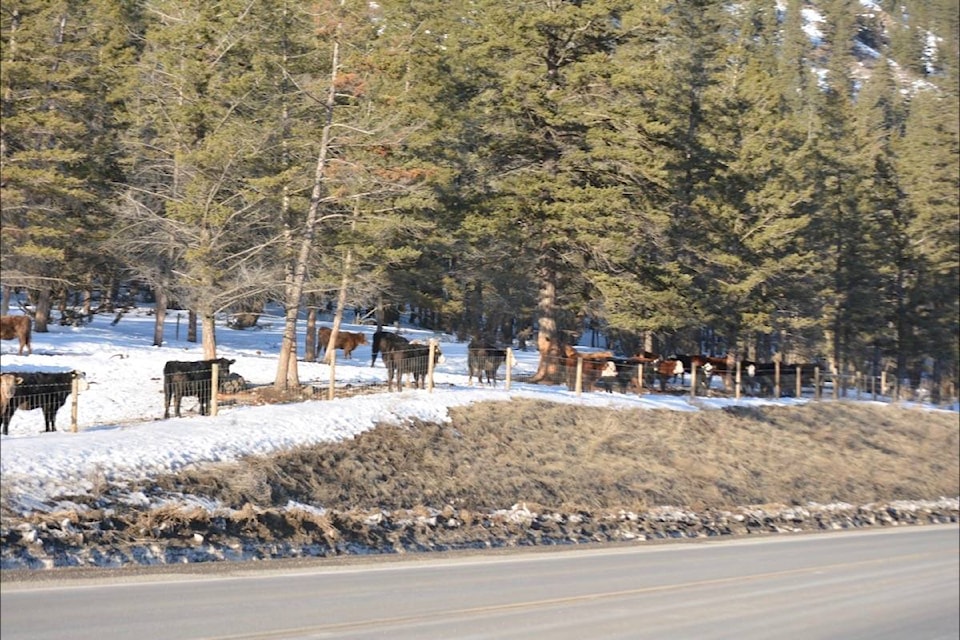David ZIRNHELT
Special to the Tribune
Science to date has provided evidence that human beings evolved in the savanna. So what does that have to do with cattle agriculture (ranching on the range) and farming in general?
I want to remind readers that these columns are not academic works. Mostly I try to check relevant literature on my subject matter, if my memory needs refreshing.
However, they are “musings” based on my experience and reading over my 55 years of adult life. None of what I write is professional advice. I do hope to give some insights on the big picture of agriculture and ranching.
It is my understanding that some of the most fertile land is in a savanna landscape: grass, bush and forbs (flowers) in between trees.
Humans have apparently always planted trees where there was none and thinned trees where there was a complete canopy to allow sunlight to the forest floor.
Some farmers and ranchers are trying to mimic nature in their stewardship practices. Some see this as putting trees back on cropland in order to stabilize soil fertility processes (soil health).
Ninety-five per cent or more of the makeup of plants is nitrogen, oxygen and carbon, free from nature in the atmosphere and soil. If multiple layers of plants (trees, brush and low ground plants) occupy an acre there can be as much as three acres in the three dimensional space.
This means three times more photosynthesis on the same piece of land with multi-story plant communities.
Most savannas have widely spaced trees, but you get the point. Even widely spaced trees can add nutrients and water from deeper layers of the soil and generate growth.
The savanna biome has the largest, deepest solar collection surface exposed to sunlight and the atmosphere of any biome on the planet.
What got me going on this topic is an article in the latest Stockman Grass Farmer.
The article is titled “Mastodon Valley Farm Focuses on Re-creating Native Oak Savannas that Existed in Pre-history.”
Such a plant community of millions of acres was created several hundred years ago in central Spain and supports a sustainable population of cattle and wild boars.
Elsewhere in the same issue the editor of the journal writes: “When a soil ecology enjoys fungal and bacterial communities, the diversity stimulates overall production - Joel Salatin, Meadow Talk, Grass Farmer, Feb 2018.
Trees (including fruit and nut trees and bushes) nurture and depend on fungal communities to create fertility.
Bacterial cultures dominate grasslands (and gardens). Trees and grass are symbiotic and therefore optimize fertility.
The owners of Mastodon (www.mastodonvalleyfarm.com) in Wisconsin had studied the history and ecology of the savanna systems in the Midwest. When Europeans came to America there were savannas kept open by Native Americans using fire, 10,000 to 500 years ago.
Before that human era, large animals kept the lush forest open (30 million years ago). Savannas didn’t need fire as the large animals, including mastodons kept the forest open.
Cows, goats, sheep, pigs and poultry all evolved from savanna species.
Now people like the owners of Mastodon Valley Farms are looking back in time to something approximating what they would like to see today on the landscape.
They admit to using a brush hog (machinery) and chainsaws to open up the forest and multi-species of mammals to keep it that way.
They brand their product as “beyond grass-fed” meats, alluding to the fact that pigs and sheep are fattened on the acorns (nuts from oaks). Most of the pastured pork in Europe is fattened on acorns “grazed” by the pigs.
And, the branding includes the beef which graze the savanna they have restored.
They help keep the brush down.
In recent times here in the Cariboo, fir trees were spaced by frequent fires providing habitat for many grazing species.
The intense fires have opened up vast areas that had evolved to closed canopies since humans stopped the burning of many smaller fires through the landscape.
As a species we have favoured savannas. Maybe we will do more of that especially with a warming climate.
David Zirnhelt is a member of the Cariboo Cattlemen’s Association and chair of the advisory committee for the Applied Sustainable Ranching program which started at Thompson Rivers University in Williams Lake in January of 2016.
